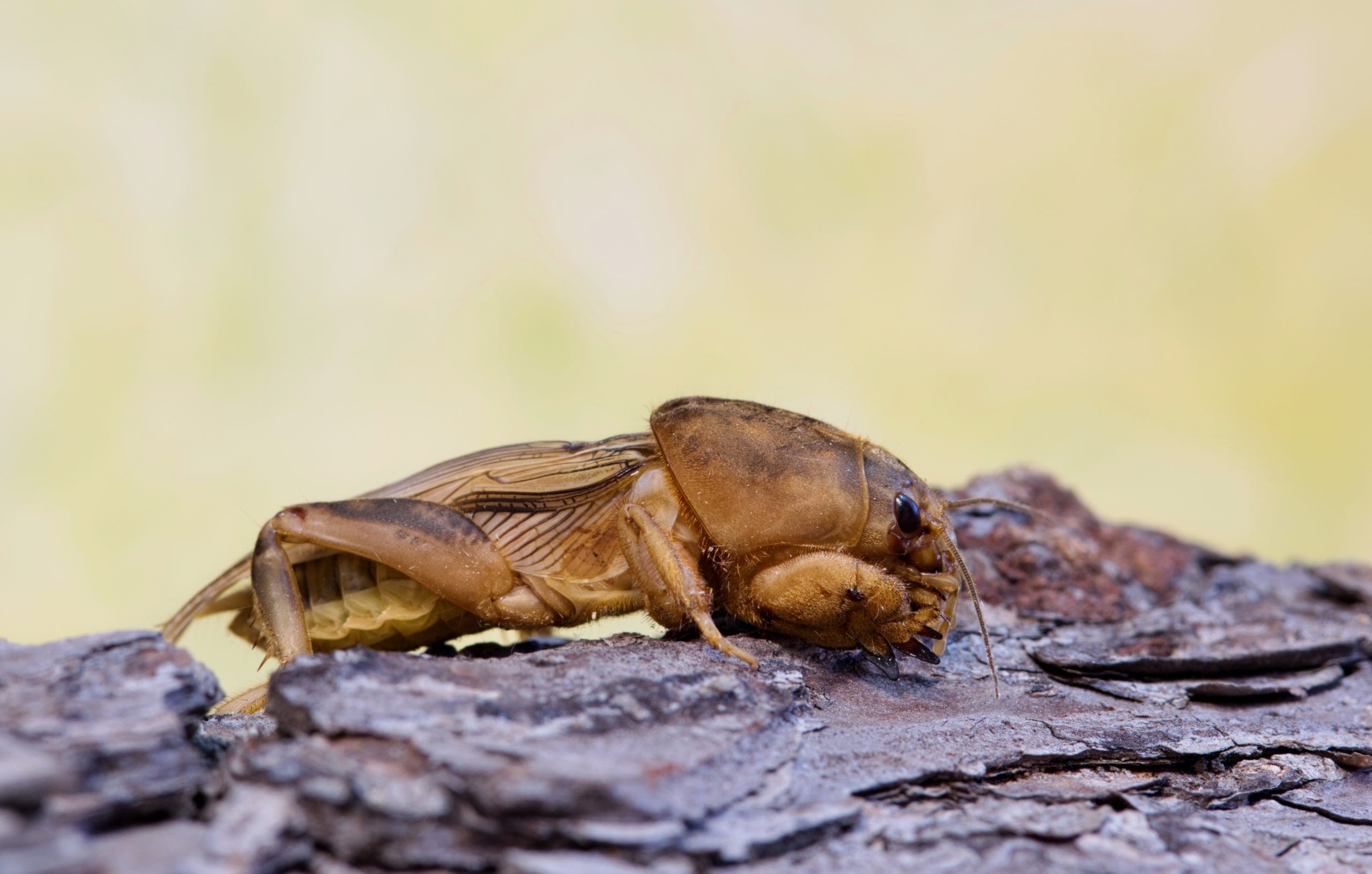
If you’re located in the Southeast or southern coastal plains, it’s very likely you’ve had properties fall prey to mole crickets at one time or another.
Aptly named, mole crickets are related to crickets, but they have enlarged heavy-clawed front legs for digging through the dirt like a mole. They feed on grass roots and shoots, but it is their tunneling that does the most damage, tearing apart roots and causing them to dry out and die.
They can feed on any turfgrass species, but they prefer bahiagrass and bermudagrass in particular.
Types of Mole Crickets
The three most damaging mole crickets are tawny mole crickets, southern mole crickets and short-winged mole crickets. Northern mole crickets are native to North America and are less of an issue compared to these three species.
The invasive species were introduced in coastal ports in the early 1900s and they have spread rapidly since then. The tawny mole cricket can be found from North Carolina to Louisiana. Meanwhile, the southern mole cricket’s distribution is spread from North Carolina to eastern Texas and some isolated western locations like Yuma, Arizona. The short-winged mole cricket cannot fly as its name implies and its spread has been limited to Florida and southern Georgia.
The tawny mole cricket is the most destructive to home lawns as it feeds exclusively on roots and shoots, while the southern mole cricket feeds on small organisms in the soil and rarely on turfgrass.
Signs of Damage
Mole crickets have one generation per year, laying eggs in April and May. They mature through a series of seven to ten nymph stages. Both nymphs and adults can create extensive tunnel systems, damaging turfgrass. They respond to desiccation and will move in the soil based on soil moisture.
The size and extent of tunneling increase as the mole crickets age. Early instar nymphs may only live a few square feet and cause minimal damage, but as they age, they may tunnel over several yards and cause extensive injury in the summer or fall.
Tawny mole crickets have multiple entrance holes and branch more at the surface, while southern mole cricks have one main surface entrance and branch deeper in the soil. These tunnels result in numerous small mounds of soil. Turfgrass damaged by tunneling is also susceptible to drought and pathogens like root rot.
Grass infested with mole crickets can be stunted as tawny mole crickets feed on the roots. Their lifespan allows them to cause widespread damage to a lawn.
Management Methods
Before treating for mole crickets, it’s advised to determine if there is an infestation. This can be achieved by applying a soapy water drench to the suspected areas. Mole crickets will come to the surface quickly if present, allowing you to identify which species it is and what life stage is present.
Mole cricket control strategies vary depending on the season. From March to May, almost all mole crickets are in the adult stage and can cause tunneling and feeding damage. However, unless the damage is so severe it is causing grass to be lost, spring is not the best time to treat the areas with insecticides.
Mole cricket treatments are most effective when targeted toward small nymphs in June and early July. By this time, turf has usually recovered from the heavy spring damage. Killing young, newly-hatched nymphs will cause there to be less damage to the lawn in the fall and next spring.
If adequate irrigation is available, the mole crickets can be manipulated to increase control thanks to their sensitivity to soil moisture. Allow the soil to dry out for three to four days and then irrigate thoroughly in the evening. Apply the insecticide the next afternoon.
Control in the fall can be difficult to achieve, so it’s best not to treat during this time where results are minimal.
Nonchemical controls have been researched, including using coarser textured bermudagrass and implementing biological controls through a parasitic wasp. Each generation of the Larra wasp can kill about 25% of the local mole cricket population. The wasp can be attracted to properties with host flowering plants shrubby false buttonweed (Spermacoce verticillate), partridge pea (Chamaecrista fasciculata), and/or Egyptian starcluster (Pentas lanceolata).

